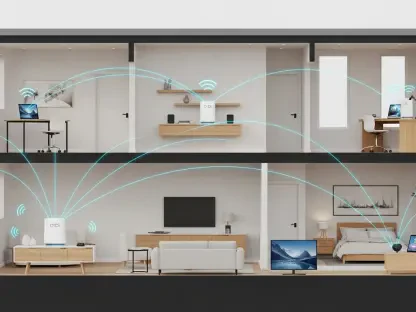The development of 5G standalone (SA) networks is creating waves in Europe as telecom operators leverage the newest technology to enhance enterprise capabilities. At the FutureNet World event in London, discussions centered around the growing deployment, revealing varying progress among European countries. Notably, British telecom giants Virgin Media O2 and BT lead the charge, focusing on business applications that include network slicing and automation, critical for optimizing networking tasks and managing data flow. Virgin Media O2’s strategic launch of its 5G SA network primarily in major urban centers set the benchmark for UK carriers as they adapt their approaches to serve a tech-savvy clientele. BT’s rollout succeeded in reaching 28 million people after transitioning to cloud-based systems post an overhaul of Huawei equipment, illustrating the challenges and opportunities accompanying this technological leap.
Enterprise-Focused Innovations
In Italy, TIM has carved out a distinctive path by integrating 5G SA with non-SA deployments, an approach designed to cater to specific applications like fixed wireless access. This nuanced strategy highlights how 5G SA’s flexibility can be harnessed to fulfill varied enterprise needs across Europe. Unlike consumer-driven models, the emphasis here is on optimizing operational processes and delivering tailor-made solutions. The fragmented nature of 5G deployment reflects diverse perceptions and business models across European operators, each identifying its unique set of opportunities. The disparity in 5G SA adoption demonstrates firms’ alignment with their regional market demands and their commitment to capitalize on measurable outcomes, such as improved efficiency and innovative service delivery.
Future Growth and Challenges
While Europe increasingly embraces 5G SA networks, the rate and scope of its expansion remain inconsistent, signaling broader industry challenges. Operators’ varying readiness and engagement levels highlight the lingering disparity in adoption and development strategies. As these networks gain momentum, enterprises are poised to benefit from superior connectivity and streamlined processes, enabling more agile operations and the launch of new services. The ongoing shift underscores the potential future growth in enterprise-focused applications and demonstrates how this technology can drive transformation across multiple sectors. Despite initial challenges, establishing robust infrastructure promises valuable insights that could shape best practices for other regions seeking to deploy similar networks. By addressing barriers and embracing collaboration, stakeholders can ensure a smoother transition into this next generation of connectivity.









